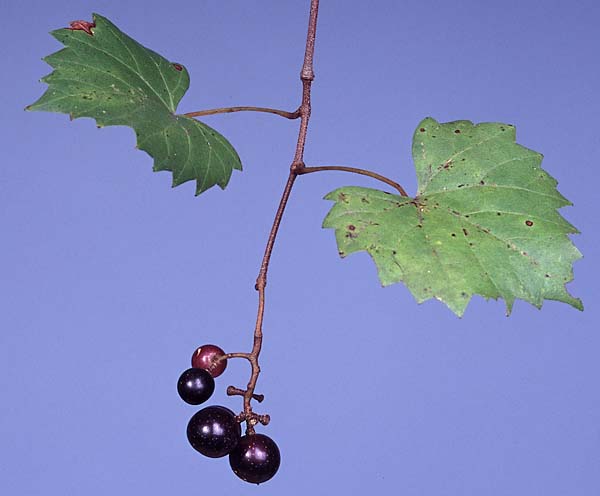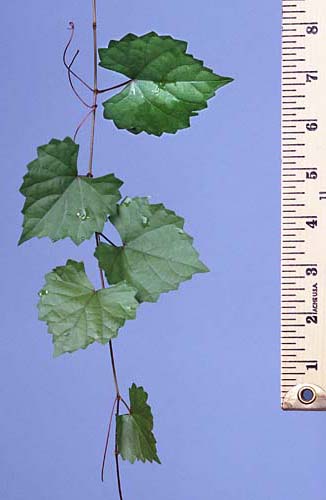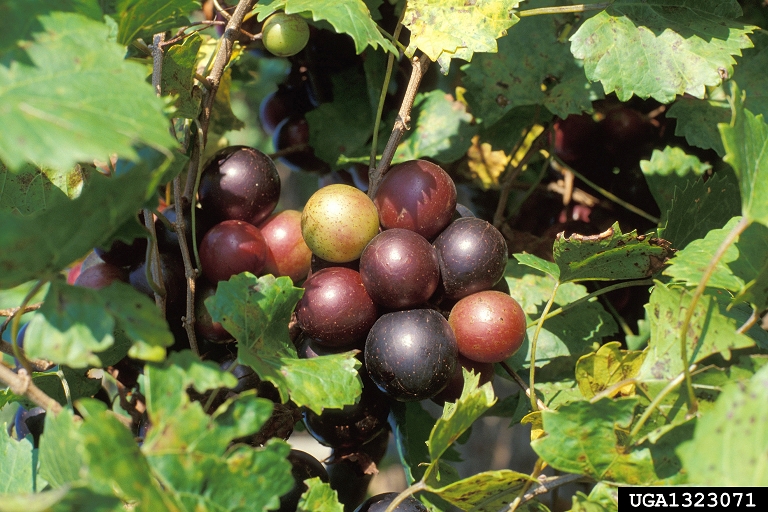In the Vines of Mistaken Identify, we’re exploring the different types of vines commonly called “invasive” around Nassau County. Rather, in fact, these vines are not invasive and many of them are native too, which provides amazing benefits to our ecosystem and environment.
It’s Important Value
The Muscadine Grape (Vitis rotundifolia) is one of our vines of mistaken identity. We have other native muscadine grapes in Florida, but the Muscadine is our most prevalent. Our native grape goes by many names, including southern fox grape, scuppernong, and wild grape. Throughout Nassau County, we can see this vine creep upwards into trees’ canopies. The fruit produced by this climbing vine serves as an important food source for all sorts of wildlife, such as deer, black bears, raccoons, grouse, cardinals, mockingbirds, and cedar waxwings (to name a few). In addition, muscadines serve as an agricultural product throughout the southeast.
The Concern
Muscadine grape is an abundant grower, to say the least. Within our natural areas and landscapes, muscadine easily moves around the landscape. Serving as valuable food for wildlife, their seeds are deposited all over the state. When left alone, especially within our built environments, Muscadine Grapes seemingly overwhelm plants within our landscapes and cause concern. Are homeowners wrong to think that? Not entirely. As a native plant to many of our native ecosystems around Nassau County, it’s common to see Muscadines grow through shrubs and into the canopies of trees. This leads to a concern of excessive weight on the branching of tress, which could cause limb breakage or tree failure. Is this true? Not entirely. Muscadine grapes can cause concerns for smaller shrubs and trees, but not larger trees.
Recommendation
We recommend removing any Muscadine grapes growing on buildings, but with regards to our native vines, it could be best to let them grow or include maintenance of them in your regular yard maintenance. It’s important to not remove the vines from the tree because of their attachment to a tree’s trunk. Yanking them off could cause damage to the trees. It is recommended that we cut the vine at its base – or let it grow and mature into the canopy of the tree.
Identification
Not all Muscadine grapes fruit, in fact, the majority of them are male vines. Dioecious plants, such as the Muscadine, has both male and female plants. Therefore, if you have a female vine on your property that produces fruit – lucky you! Other identifying characteristics include the following:
- Size/Form: The woody vines grow upwards into the canopies of trees, reaching heights of 60 – 100 feet long. Branches are alternately arranged.
- Bark: Smooth on younger stems. Older stems have tight, exfoliating bark.
- Leaf: Deciduous, alternate, cordate (heart-shaped), leaf margin is dentate (bumps)
- Fruit: Green, black, purple, yellow-green (scuppernong)



For More Information
Follow the Vines of Mistaken Identity Blog Series
Upcoming Horticulture Programs
- Virginia Creeper (Parthenocissus quinquefolia)
- Trumpet Vine (Campis radicans)
- Greenbriar (Smilax spp)
- Passion Flower Vine (Passiflora incarnata)
- Carolina Jessamine (Gelsemium sempervirens)
Source: UF/IFAS Pest Alert
Note: All images and contents are the property of UF/IFAS.



